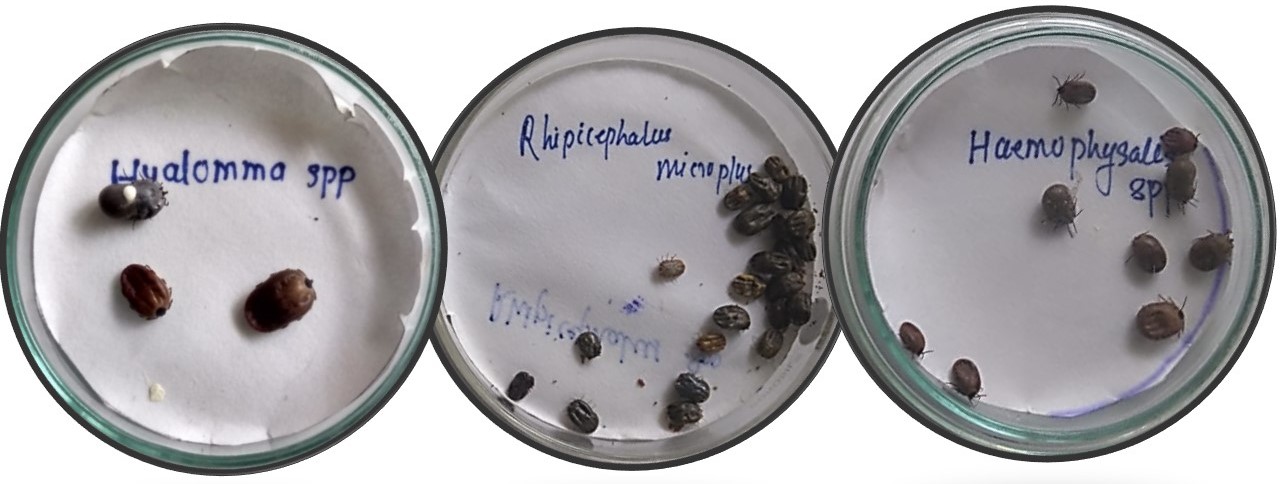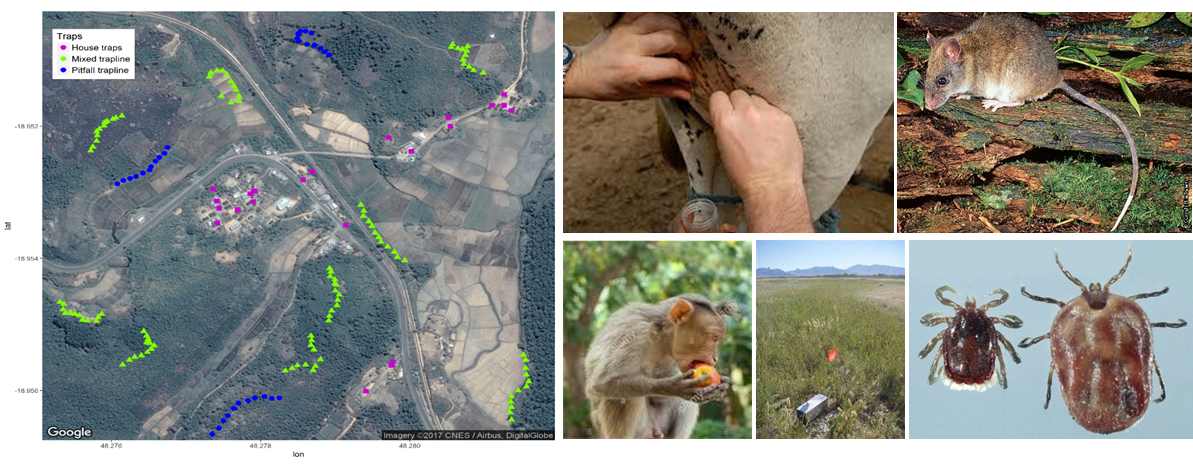The forested regions of the Western Ghats have high biodiversity and complex ecological communities. We are investigating three zoonoses (diseases passed to humans from animals) where small mammals have an important role in the transmission cycle: Kyasanur Forest Disease (KFD), leptospirosis and scrub typhus. Human cases of these diseases have been reported from rural communities within the Western Ghats but we lack up to date knowledge about how the vectors and wildlife and domestic animal hosts for these diseases are distributed spatially within the fragmented habitats of the Western Ghats and how vector and host behaviour and abundance may change seasonally across the year within this landscape.
Historically, evergreen, semi-evergreen and moist-deciduous forests were considered to be the highest risk habitats for KFD-infected ticks. However, our previous MonkeyFeverRisk project (https://www.monkeyfeverrisk.ceh.ac.uk/) suggests that the risk of spillover of Kyasanur Forest Disease from vectors and animals to people is highest in diverse agro-forestry landscapes that are created when moist evergreen forest is replaced with plantations and paddy cultivation. We also found that the risk of human exposure to infected ticks is not just restricted to forests but extends to forest edges, plantations, houses and gardens and involves other tick species as well as Haemophysalis spinigera. Within the Western Ghats, we lack understanding of spatial and temporal risk of leptospirosis and scrub typhus, and whether the seasonality of KFD transmission cycles has changed since the pioneering work of Dr Rajagopalan and others last century, which occurred prior to advanced climate warming and extensive habitat fragmentation in the region.


